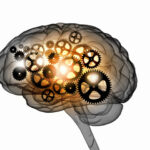What is Depression?
Everyone has moments in their lives where they may feel down, sad or blue. However, these feelings typically don’t last long and pass within a few days. When you have depression, these feelings last much longer (at least 2 weeks) and can interfere with sleep, appetite, energy and concentration and thereby affect daily life. Depression is a common and serious illness, but too often people never seek treatment for it. They believe it will go away on its own or are ashamed and convinced that it is some sort of personal weakness or defect. The reality is that most people with depression can get better with treatment, even in cases of severe depression.
What are the Signs and Symptoms of Depression?
Since each person is a unique individual, depression affects people in different ways, but there are some commonly known symptoms that usually indicate a person might be depressed. These include: persistently feeling sad, numb or empty; loss of interest in previously pleasurable hobbies or activities (including sex); irritability, restlessness; feelings of guilt, worthlessness, or helplessness; feelings of hopelessness or pessimism; insomnia (such as waking up in the middle of the night or the early-morning) or excessive sleeping; overeating, or loss of appetite; decreased energy or fatigue; difficulty concentrating, remembering details, and making decisions; thoughts of suicide, or even suicide attempts.
What Causes Depression?
There are a number of things that can lead to depression, but it is often a combination of biological, environmental, and genetic factors. Biologically speaking, there are a number of real changes that occur in a depressed human brain. As a result, brain-imaging technologies, like magnetic resonance imaging (MRI), have shown that the brains of people who have depression look different than those of people without depression. Despite this fact, these images do not reveal why the depression has occurred, nor can they be used to diagnose depression. However, there are longstanding theories about depression that suggest that on a microscopic level chemical neurotransmitters (what brain cells use to communicate) are out of balance in a depressed brain, which over time leads real structural changes on a macroscopic level. Environmentally, the loss of a loved one, a difficult relationship, trauma, or any stressful situation can trigger a depressive episode. Sometimes, though, depressive episodes may occur without an obvious trigger. As for genetics, some types of depression tend to run in families, who may carry one or more genes for it that have not yet been identified. Lastly, they can also occur in people without any family history at all.
What are the Different Types of Depression?
Major Depression or Major Depressive Disorder is characterized by a combination of symptoms that interfere with a person’s sleep, appetite, energy and concentration and loss enjoyment for previously pleasurable activities. There are times when we may feel sad, lonely, or hopeless for a few days and we talk about feeling “depressed.” But Major Depression or clinical depression is disabling and can prevent us from functioning normally. An episode of clinical depression may occur only once in a person’s lifetime, but if left untreated can recur throughout a person’s life. The reason for this is that each episode of depression is damaging to the brain and increases the likelihood of further episodes. For a depression to be considered a Major Depression, one of the symptoms must be either a depressed mood or loss of interest in previously pleasurable activities. The symptoms should be present daily or for most of the day or nearly daily for at least two weeks. Also, the depressive symptoms must cause clinically significant distress or impairment in functioning. They cannot be due to the direct effects of a substance, such as in drug abuse or the result of medications. They cannot be the result of a medical condition, such as hypothyroidism, nor occur within two months of the loss of a loved one. However, while Major Depression can be a serious and disabling condition, it can get better with treatment. This may involve the use of therapy and/or medications.
Persistent Depressive Disorder (previously known as Dysthymic Disorder), Chronic Depression, or Dysthymia are different terms for the same condition. This is characterized by long-term symptoms that while not severe enough to disable a person, can prevent normal functioning or feeling well. It results in low, dark moods that invade your life nearly every day for two years or more. It is a less severe form of depression in that those who suffer from Dysthymia are usually able to function adequately, but might seem consistently unhappy. People with Dysthymia may also experience one or more episodes of major depression during their lifetimes.
Double Depression is when a Major Depression occurs over an existing Chronic Depression. Between 3% and 6% of the population is at risk for this, yet many people avoid getting treatment that could save their lives. What is important to know is that if an episode of depression is treated early enough sometimes brief psychotherapy or medication alone can help. However, a chronic depression such as a double depression erodes and changes a person’s personality from its original state thereby leading to the need for longer psychotherapeutic treatment in order to restore a person’s personality back to its original state or an improved state.
Depressive Disorder NOS is a term used to describe any kind of depression that doesn’t neatly fit into one of the two categories above, or basically every other kind of depression. These include: Minor Depression, Psychotic Depression, Postpartum Depression, Seasonal Affective Disorder and Atypical Depression. Some also consider Manic-Depression to be a kind of depression, but this is another name for Bipolar Disorder, which while also a mood disorder, is more than just a depression.
Minor Depression is characterized by having symptoms for 2 weeks or longer that do not meet full criteria for major depression. However, people with Minor Depression are at high risk for developing major depressive disorder without treatment.
Psychotic Depression occurs when a person has severe depression to the point that they lose touch with reality and can begin to have hallucinations, delusions or both. A person with Psychotic Depression may have unusual and disturbing false beliefs (delusions). Those with Psychotic Depression may hear or see things that others don’t see or hear (hallucinations).
Postpartum Depression is form of depression which is much more serious than the “baby blues”. As many as 75% of new moms experience the “baby blues” after giving birth, when hormonal and physical changes and the new responsibility of caring for a newborn can be overwhelming. However, in some women this can develop into a postpartum depression. It is estimated that about 10 percent of women experience postpartum depression after giving birth. This is diagnosed when a new mother develops a major depressive episode within one month after delivery.
Seasonal Affective Disorder (SAD) is characterized by the onset of depression each year at the same time during the winter months, when there is less natural sunlight. The depression generally lifts during spring and summer. Seasonal Affective Disorder (SAD) may be effectively treated with light therapy, but nearly half of those with Seasonal Affective Disorder (SAD) do not get better with light therapy alone. Antidepressant medication and psychotherapy can reduce Seasonal Affective Disorder (SAD) symptoms, either alone or in combination with light therapy.
Atypical Depression is a depression that unlike regular depression is not marked by pervasive sadness. Instead those that suffer from Atypical Depression have overeating, oversleeping, fatigue, extreme sensitivity to rejection and moods that worsen or improve in direct response to events.
Manic-Depression is also known as Bipolar Disorder. It is not as common as major depression or Dysthymia and characterized by cycling mood changes that go from extreme highs (e.g., mania) to extreme lows (e.g., depression).
How Do Women Experience Depression?
Depression is more common among women than among men. One reason may be due to the cyclical rise and fall of estrogen and other hormones that affect a woman’s brain chemistry. This is evident in the fact that some women may develop depressive symptoms associated with the hormonal changes that typically occur around ovulation and before menstruation begins. This is a severe form of premenstrual syndrome (PMS) called premenstrual dysphoric disorder (PMDD). Women are also especially vulnerable to developing depression (postpartum depression) after giving birth, when there is a sudden drop in their hormone levels. Lastly, some women experience an increased risk for depression during the transition into menopause. There are also life cycle, psychosocial factors and societal expectations that women experience differently and they may be linked to women’s higher depression rate. Many women face additional stresses of balancing work and home responsibilities, caring for children and aging parents and relationship strains.
How Do Men Experience Depression?
Men and women experience depression differently. Unlike women who are more likely to have feelings of sadness, worthlessness, and excessive guilt, men are more likely to be very tired, irritable, lose interest in once-pleasurable activities, and have difficulty sleeping. They can also become irritable, angry, frustrated, discouraged, and sometimes abusive. They are more likely than women to turn to alcohol or drugs when depressed. Some will spend more time at work to avoid talking about their depression with family or friends, or behave recklessly.
How Do Children Experience Depression?
– Courtesy of the American Academy of Child & Adolescent Psychiatry: Facts for Families
Not only adults become depressed. Children and teenagers also may have depression, as well. The good news is that depression is a treatable illness. Depression is defined as an illness when the feelings of depression persist and interfere with a child or adolescent’s ability to function. About 5 percent of children and adolescents in the general population suffer from depression at any given point in time. Children under stress, who experience loss, or who have attention, learning, conduct or anxiety disorders are at a higher risk for depression. Depression also tends to run in families. The behavior of depressed children and teenagers may differ from the behavior of depressed adults. Child and adolescent psychiatrists advise parents to be aware of signs of depression in their youngsters.
If one or more of these signs of depression persist, parents should seek help:
- Frequent sadness, tearfulness, crying
- Decreased interest in activities; or inability to enjoy previously favorite activities
- Hopelessness
- Persistent boredom; low energy
- Social isolation, poor communication
- Low self esteem and guilt
- Extreme sensitivity to rejection or failure
- Increased irritability, anger, or hostility
- Difficulty with relationships
- Frequent complaints of physical illnesses such as headaches and stomachaches
- Frequent absences from school or poor performance in school
- Poor concentration
- A major change in eating and/or sleeping patterns
- Talk of or efforts to run away from home
- Thoughts or expressions of suicide or self-destructive behavior
A child who used to play often with friends may now spend most of the time alone and without interests. Things that were once fun, now bring little joy to the depressed child. Children and adolescents who are depressed may say they want to be dead or may talk about suicide. Depressed children and adolescents are at increased risk for committing suicide. Depressed adolescents may abuse alcohol or other drugs as a way of trying to feel better. Children and adolescents who cause trouble at home or at school may also be suffering from depression. Because the youngster may not always seem sad, parents and teachers may not realize that troublesome behavior is a sign of depression. When asked directly, these children can sometimes state they are unhappy or sad. Early diagnosis and treatment are essential for depressed children. Depression is a real illness that requires professional help. Comprehensive treatment often includes both individual and family therapy. For example, cognitive behavioral therapy (CBT) and interpersonal psychotherapy (IPT) are forms of individual therapy shown to be effective in treating depression. Treatment may also include the use of antidepressant medication. For help, parents should ask their physician to refer them to a qualified mental health professional, who can diagnose and treat depression in children and teenagers.
What are Some Coexisting Conditions that Occur in Depression?
There are a number of things that can cause depression, result from depression or amplify depression. When this occur the identification and treatment of these other conditions is important because the coexistence of depression with other illnesses compounds them all. This leads to more severe symptoms, more suffering, greater duration of all coexisting conditions and greater medical costs. Regardless, co-occurring illnesses need to be diagnosed and treated, in order to improve the overall outcome for the individual.
Depression can occur with many serious medical conditions such as heart disease, stroke, cancer, seizures, HIV/AIDS, diabetes, and Parkinson’s disease. Sometimes hormone or thyroid problems can lead to depression. Lack of vitamins and poor nutrition can lead to it as well. Additionally, many psychiatric conditions that are not adequately treated can lead to depression as the afflicted individual gets more and more worn down. These include ADHD, Anxiety Disorders (post-traumatic stress disorder (PTSD), obsessive-compulsive disorder, panic disorder, social phobia, and generalized anxiety disorder), movement Disorders, and the list goes on. Furthermore, people who are suffering may try to self-medicate and end up with a substance abuse problem, though the reverse is also true in that many substance of abuse or dependence (such as alcohol) can in excess lead to depression.




